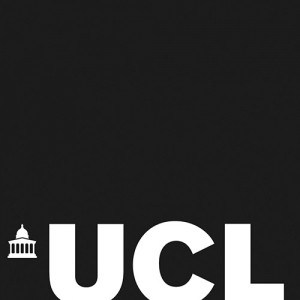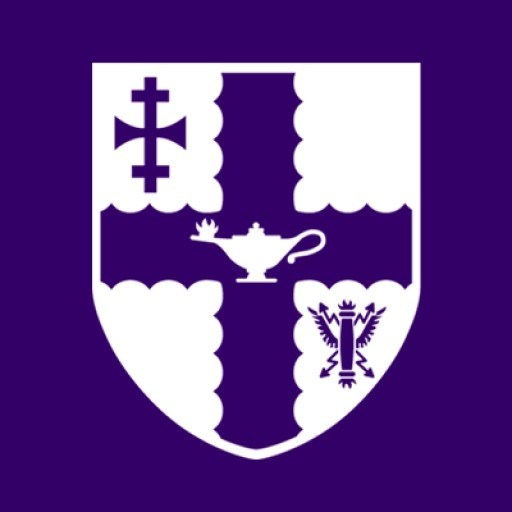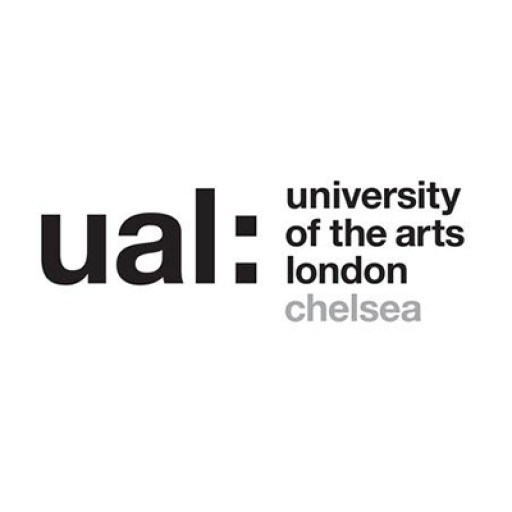Photos of university / #uniofsuffolk
The Bachelor of Arts in Interior Architecture and Design at the University of Suffolk offers a comprehensive program dedicated to developing creative and innovative professionals capable of transforming interior spaces. This course is tailored for students who are passionate about design, architecture, and the aesthetics of indoor environments, aiming to combine functionality with visual appeal. Throughout the program, students acquire a diverse skill set, including spatial planning, interior construction, lighting design, material selection, and sustainable practices. The curriculum emphasizes both theoretical knowledge and practical application, ensuring students are well-prepared for the dynamic interior design industry.
Students engage in a variety of projects that simulate real-world scenarios, working closely with industry professionals and utilizing modern design software and tools. The program also fosters critical thinking, problem-solving abilities, and effective communication skills, which are essential in presenting ideas and collaborating with clients, architects, and contractors. The interdisciplinary approach encourages students to explore the cultural, social, and environmental impacts of interior spaces, promoting sustainable and eco-friendly design principles.
The University of Suffolk provides state-of-the-art facilities, including design studios, workshops, and digital labs, supporting the hands-on learning experience. Graduates of this program are equipped to pursue careers in interior architecture, interior design consulting, space planning, exhibition design, and related fields. They are prepared to work in a variety of settings, such as commercial, residential, retail, and hospitality sectors. The program may also serve as a foundation for further postgraduate studies or professional accreditation.
By choosing this program, students join a creative community dedicated to excellence in design and innovation. The curriculum is regularly updated to reflect industry trends and technological advances, ensuring that graduates remain competitive and industry-ready. The program aims to develop not only technical skills but also an understanding of the ethical, cultural, and environmental responsibilities of modern interior architecture and design professionals. This distinct combination of academic rigour and practical exposure makes the BA in Interior Architecture and Design an excellent choice for aspiring interior architects and designers committed to shaping inspiring and sustainable indoor environments.
The Bachelor of Arts in Interior Architecture and Design at the University of Suffolk offers a comprehensive and innovative curriculum focused on developing students' skills in interior space planning, aesthetic design, and technical expertise. The programme is designed to prepare students for a successful career in the dynamic field of interior architecture, combining creative concepts with practical application. Throughout their studies, students explore a wide range of subjects, including design principles, visual communication, materials and finishes, sustainable design, and building regulations. The programme emphasizes the importance of understanding user needs and client requirements, enabling students to create functional, safe, and aesthetically pleasing interior environments.
Students engage in various projects that challenge their design thinking and problem-solving abilities, often collaborating with industry professionals and clients to gain real-world experience. The course also covers relevant digital tools such as CAD, 3D modelling, and rendering software, ensuring graduates are proficient with current technology used in the industry. A strong focus is placed on sustainable practices and environmentally responsible design solutions, reflecting the increasing demand for eco-friendly interiors. The programme encourages creativity, innovation, and critical thinking, empowering students to develop their unique design voice while adhering to professional standards and codes of conduct.
In addition to technical skills, students learn important project management and communication skills, preparing them for roles that require teamwork, negotiation, and presentation. The programme concludes with a final year project where students demonstrate their ability to integrate their knowledge and skills into a professional portfolio. Graduates from the Interior Architecture and Design programme are well-equipped to work in interior design consultancies, architecture firms, retail and commercial spaces, residential projects, and set design for events or media. They also have the option to pursue postgraduate study or entrepreneurial ventures within the creative industries.
The University of Suffolk provides state-of-the-art studios, workshops, and resources to support student learning, alongside expert academic staff with industry experience. The programme's strong industry links and placement opportunities enable students to build professional networks and enhance their career prospects upon graduation. Whether students aim to design innovative interiors or lead sustainable projects, this programme offers the essential skills, knowledge, and experience to succeed in the vibrant field of interior architecture and design.
Program Requirements: Interior Architecture and Design at University of Suffolk
Applicants are required to hold a minimum of two A-level qualifications or equivalent, with at least one subject related to art, design, or a creative discipline. Alternative qualifications such as BTEC Level 3 Extended Diploma in Art and Design or equivalent are also accepted. Consideration may be given to applicants with relevant work experience or a portfolio demonstrating suitable skills and creativity, particularly if formal qualifications are lacking.
Prospective students must submit a portfolio of work that showcases their creative ability, originality, and technical skills. The portfolio should include a variety of projects, sketches, CAD drawings, models, or other relevant work that evidences their potential to succeed in the program. Details of portfolio submission requirements and deadlines are available on the university website.
English language proficiency is required for international students. Non-native speakers must demonstrate a minimum of IELTS 6.0 overall, with no less than 5.5 in any component, or an equivalent qualification accepted by the university. Proficiency certificates must be provided at the time of application.
Applicants are expected to demonstrate motivation and enthusiasm for interior architecture and design, an understanding of the profession’s demands, and an awareness of current industry trends. Personal statement or statement of purpose should outline their interest in the field, career aspirations, and reasons for choosing this programme.
References or letters of recommendation from previous educators or employers may be requested to support the application. These should reflect the applicant’s creative capacity, commitment, and suitability for the course.
Applicants with relevant practical experience in design, construction, or related fields may have their applications considered favorably, especially if they can provide evidence of their practical skills and knowledge.
All applicants are advised to review specific entry requirements and guidance on the university's official admissions webpage, as requirements may be updated periodically. Early application is recommended due to competitive entry and limited places.
Financing studies for the Interior Architecture and Design program at the University of Suffolk typically involve a combination of tuition fees, possible scholarship opportunities, and financial aid options available to both domestic and international students. The tuition fees are set annually and can vary depending on the student’s residency status and specific course requirements. For UK students, tuition fees are generally structured to be manageable, with options for installment payments throughout the academic year. International students may face higher tuition fees, reflecting the cost of international study, but various scholarship funds may help offset these costs.
Students are encouraged to explore government-backed funding options such as student loans available through Student Finance England, which can cover tuition fees and living expenses. These loans usually have favorable repayment terms, commencing after graduation once the graduate's income exceeds a certain threshold. The university also provides guidance on the application process for these financial aids, including deadlines and required documentation.
Additionally, the university offers a range of scholarships and bursaries aimed at supporting talented and deserving students. These include merit-based awards, need-based bursaries, and specific scholarships for creative disciplines like Interior Architecture and Design. Application for these funding sources often requires submitting a portfolio, academic records, and a personal statement demonstrating motivation and financial need.
Part-time work opportunities are available on campus and within the local community, providing students with additional income streams and practical experience. The university’s career services help students find suitable employment arrangements that complement their studies.
Students are advised to consider comprehensive financial planning, including budgeting for tuition, accommodation, materials, and personal expenses. The university maintains partnerships with various financial institutions and offers advice on managing student loans and personal finances effectively.
International students may also explore external sponsorships, private scholarships, and grants offered by international organizations and cultural foundations. Some students benefit from the university’s connections to industry partners, which may provide paid internships or sponsored projects that can enhance employability and contribute to financial stability during studies.
In summary, financing a degree in Interior Architecture and Design at the University of Suffolk involves leveraging a combination of university-provided scholarships, government loans, personal savings, part-time employment, and external funding options. The university’s support services are dedicated to helping students navigate the financial aspects of their education, ensuring access and affordability while focusing on academic and professional success.
The Bachelor of Arts (Hons) in Interior Architecture and Design at the University of Suffolk is a comprehensive undergraduate program designed to equip students with the knowledge, skills, and creative vision necessary to excel in the dynamic field of interior architecture. This programme emphasizes a combination of design principles, technical expertise, and a thorough understanding of the architectural and environmental contexts that influence interior spaces. Throughout the course, students engage with a broad curriculum that covers key areas such as spatial planning, lighting design, materials and finishes, sustainable design practices, and visual communication techniques.
The program aims to foster innovative thinking and problem-solving abilities vital for creating functional, aesthetic, and user-centered interior environments. Students are encouraged to develop a strong foundation in design theory while also gaining practical experience through workshops, studio projects, and industry placements. Emphasis is placed on developing proficient skills in drawing, 3D modeling, computer-aided design (CAD), and presentation techniques, ensuring graduates are well-prepared for the professional interior architecture sector.
The university provides state-of-the-art facilities, including dedicated design studios and access to the latest software, enabling students to experiment and refine their ideas effectively. The course also integrates elements of project management and sustainability, reflecting industry trends towards environmentally responsible and well-managed design solutions. Collaboration with industry partners and participation in real-world projects enhance employability, providing valuable networking opportunities and practical insights into the commercial interior design environment.
Graduates of the program are equipped to pursue careers as interior architects, design consultants, space planners, or interior design specialists. They may work across sectors such as residential, commercial, hospitality, retail, and public spaces. The university also supports students interested in further postgraduate studies or research in related fields. Overall, the Bachelor of Arts in Interior Architecture and Design at the University of Suffolk aims to develop versatile, forward-thinking professionals capable of contributing creatively and practically to the built environment, addressing the physical and aesthetic needs of users while considering sustainability and innovation as core principles in their work.








